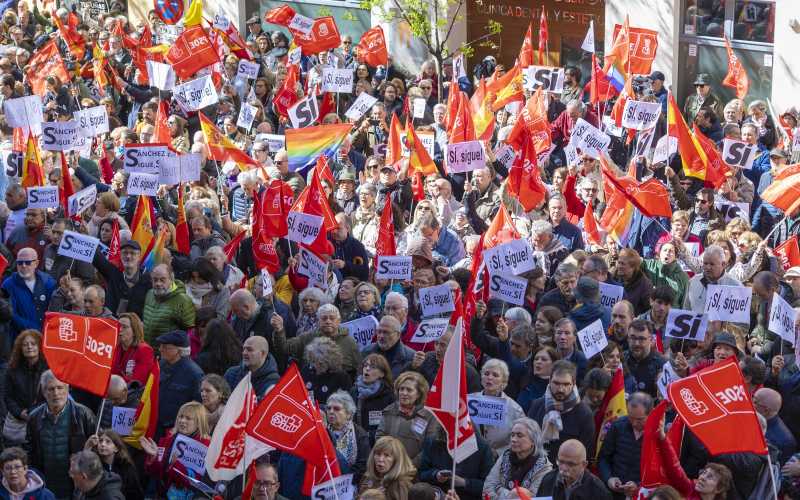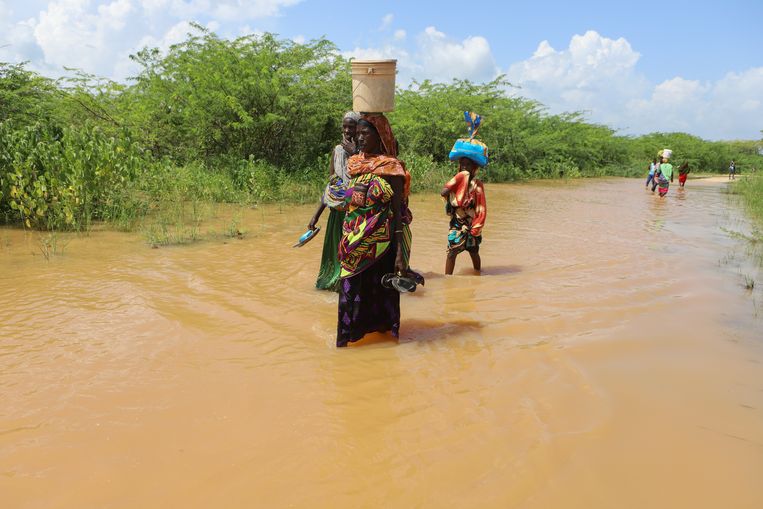US meteorologist Bernadette Woods Blakey maps the impact of climate change for the NGO Climate Central. As the Climate Summit enters its final phase, it looks at the state of the climate and the achievements of this COP. “We are definitely making progress.”
What do you think of the achievements of the COP so far?
“There are hopeful events. Additional agreements have already been concluded to limit emissions of methane, a much more powerful greenhouse gas than carbon dioxide.”2 short term. Personally, I think that the establishment of warning systems by the World Meteorological Organization (WMO) is very important. Not all countries are well prepared for the extreme events that are already coming our way. To protect people, we should not only focus on reducing emissions, but also on adaptation. Steps have already been taken in this regard at this Conference of the Parties.
“As well as establishing a loss and damage fund (Where rich countries deposit money to compensate for the damage caused to poor countries due to temperature rise, DD) It is a good thing. An important point of discussion will of course be how quickly we should transition away from fossil fuels.
Company2Emissions are still rising, and the Earth has already warmed by 1.2 degrees. Yet you describe yourself as a “stubborn optimist.” Why?
“This does not mean that I am naive. We are seeing an increase in extreme weather events and their impact on our lives, our health and our availability of food and water around the world. So I certainly do not want to deny the seriousness of what is happening.”
“But at the same time we are definitely making progress. Look at the rise of electric cars in Europe, the US and China. Or the rise of solar and wind power. And it’s actually cheaper in many places than fossil power. So we’re making progress, but it’s still happening very slowly.” And on a very small scale.
According to the latest UN Emissions Gap Report, based on promised reductions in global greenhouse gas emissions, we are headed for a temperature rise of 2.5 to 2.9 degrees Celsius by 2100. We can also interpret this in an optimistic or pessimistic way.
“Exactly. Before the Paris climate agreement, according to some projections, we were heading towards a 4, 5 or 6 degree rise in temperatures by the end of the century. We now see that these projections have been revised. But of course that is not enough. Because it is still more than “1.5 or 2 degrees of warming below which we should remain according to the Paris Agreement.”
What are the chances that this will still work?
“If you look at the relationship between temperature rise and the amount of greenhouse gases in the atmosphere, and how much of the ‘carbon budget’ we have already released, it is still possible to limit temperature rise to 1.5 degrees. From a purely scientific point of view then.
According to the United Nations, emissions must be reduced by 42 percent by 2030 to stay below one and a half degrees of warming. A less stubbornly optimistic person might say: This will not happen.
“We have known for a long time what we need to do to achieve this. But it is important for people to realize that a temperature rise of 1.5 or two degrees is not a magic threshold beyond which all is lost.
“We must remember that every tenth of a degree matters. For example, the difference between 1.5 and 2 degrees in temperature rise is already huge in terms of the destruction of coral reefs and the expected amount of extreme weather. Every tenth of a degree increases the challenges. A degree of warming that we can avoid means that the Earth will remain more habitable.
In various scenarios, we exceed the limit of 1.5 or 2 degrees, only to have the temperature drop again. How realistic is that?
“The path to get there is not entirely clear. There is a lot of great research being done on how to use carbon dioxide2 They can be removed from the atmosphere. We have waited so long to take action that we need to continue exploring this technology and using it wherever possible. But we should not depend on it. Stopping pumping more greenhouse gases into the atmosphere is a more obvious way to reduce global warming.
If we do drop to 2.5 to 2.9 degrees, what does that mean?
“Look at what we’ve already seen in the last year, with temperatures rising by 1.2 degrees. From record temperatures to massive floods on multiple continents. Look at the impact we’re already seeing on food production, and how extreme weather at the wrong time can destroy crops. “The already tangible consequences of global warming do not simply multiply as global warming doubles. No, this effect becomes stronger with more warming. It is better not to see what the world looks like 2.5 degrees warmer. It is not a pleasant world to live in.”
When can we consider this summit a success?
“I don’t think you can evaluate it in such a simple way. Progress will be made in some areas, and less than it should be made in others. You cannot expect everything to be resolved at this summit. You may regret that things are moving too slowly, and that promises “What is presented does not always translate into concrete action. But these climate conferences are important because they keep the dialogue on the topic going. This ultimately leads to action and progress.”

“Friendly communicator. Music trailblazer. Internet maven. Twitter buff. Social mediaholic.”







More Stories
Popular applications are not without risks: “This is how bike thieves know where you work or live”
Never before: the makers of “Blind Married” attract everyone's attention
Olivier Deschacht and En Payne are shocked: There is something wrong with talking about special forces | Football24